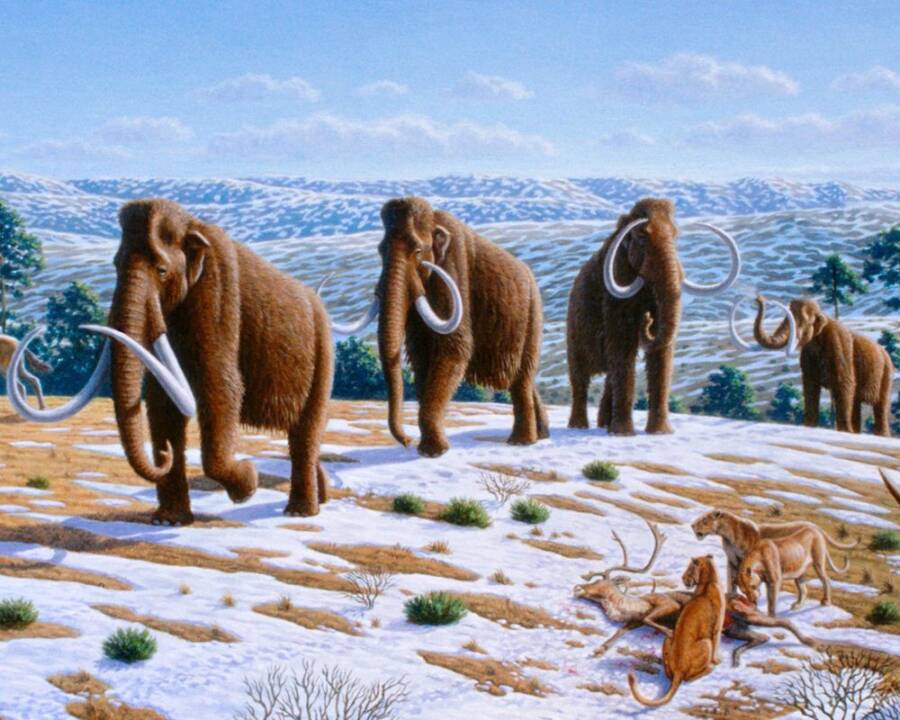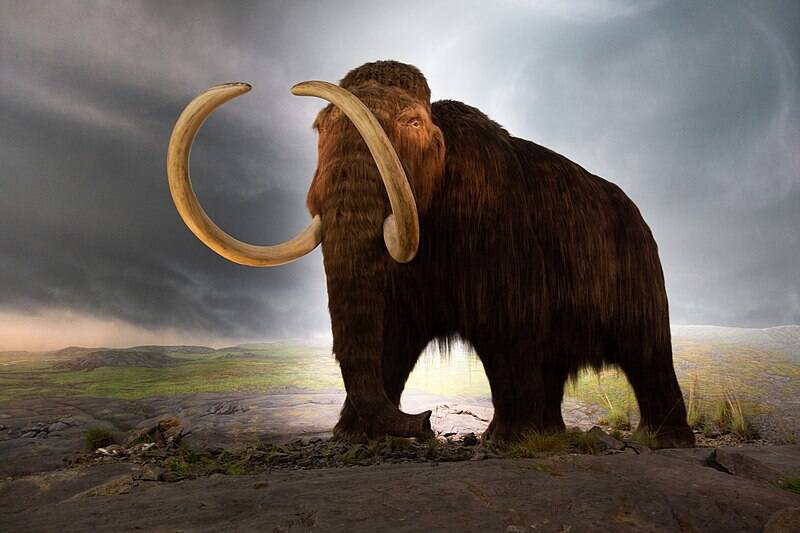Researchers theorize that woolly mammoths may have gone extinct due to pollen allergies triggered by climate change, which impaired their ability to find mates, detect predators, and locate food.

Mauricio Antón/PLOS BiologyMost woolly mammoths died off around 10,000 years ago, though a small population survived on Russia’s Wrangel Island until 2000 B.C.E.
More than 11,000 years ago, woolly mammoths roamed the cold climates of Europe, North America, and Asia. They were similar to modern-day elephants, using their large tusks for foraging and defense and their fur pelts to protect against frigid temperatures. Despite their resilience, however, the last of the species died off 4,000 years ago. Scientists have put forth several reasons for their demise, such as overhunting, climate change, and inbreeding.
Now, a new study from a group of international researchers has added another possible reason to that list: pollen allergies. As the Ice Age came to an end and the globe began to warm, new vegetation spread across the woolly mammoths’ territory, producing more pollen.
Scientists propose that this pollen may have triggered allergic reactions in woolly mammoths, impairing their sense of smell. This would have made it difficult for them to locate food, detect predators, and find mates, contributing to a population decline.
Though this theory is still speculative, scientists are calling for further studies to test it. By analyzing woolly mammoth remains for signs of pollen-producing plants and immune system responses, researchers hope to determine if allergies really did play a role in the mammoths’ extinction. If confirmed, this discovery would offer a unique perspective on the factors leading to the demise of one of the most recognizable prehistoric animals.
Could Pollen Have Killed Off Woolly Mammoths?
As the Ice Age came to an end more than 10,000 years ago, new types of vegetation began spreading across the globe as temperatures warmed. This included flowering plants that produced more pollen than animals like woolly mammoths were accustomed to.
A new study published in the journal Earth History and Biodiversity suggests that this influx of pollen caused mammoths to develop allergies, which inhibited their sense of smell.

Public DomainA 13,000-year-old depiction of a mammoth in the Grotte de Rouffignac, a cave in France.
The massive creatures relied on their noses to sniff out mates, search for food, and detect predators, so losing their ability to smell would have left them in a precarious position. According to the study, “The development of allergies from plant pollen… could lead to decrements in sensitivity to odors in animals during the breeding season. This may explain the extinction of animals due to a decrease in sexual intercourse.”
Study authors say this theory is supported by the presence of immunoglobulins, which the body produces in response to some allergic reactions — such as hay fever — in the fossilized remains of mammoths found in Siberia. But how?
Evidence Of Pollen Allergies In The Remains Of Woolly Mammoths
Gleb Zilberstein, the lead author of this latest research, told The Telegraph, “This was the first study where fragments of immunoglobulins were found in remains tens of thousands of years old.”

Thomas Quine/Wikimedia CommonsA model of a woolly mammoth at the Royal Victoria Museum in British Columbia, Canada.
Immunoglobulins, also called antibodies, are proteins made in the intestines during some allergic responses. They are then eliminated from the body through defecation, so scientists posited that analyzing fossilized mammoth feces could determine if the creature that produced it had recently created immunoglobulins. If the proteins were to be present in the feces, it could be a sign that the mammoth had undergone an allergic response to pollen.
Scientists also suggested studying the stomach contents of mummified mammoths to see if pollen-producing plants were present in their digestive systems.
This theory is still speculative as of now, but if confirmed, it would add an interesting twist to the already complicated story of the woolly mammoths’ extinction.
After learning how woolly mammoths may have suffered from pollen allergies, read about 11 of Earth’s most bizarre prehistoric animals. Then, learn what really killed the dinosaurs.





